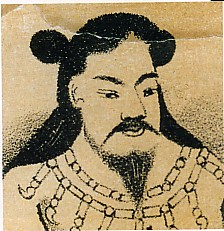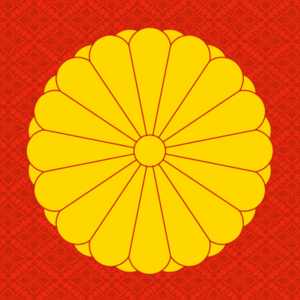Emperor Itoku facts for kids
Quick facts for kids Itoku |
|
|---|---|
 |
|
| Emperor of Japan | |
| Reign | 510 BC – 477 BC (traditional) |
| Predecessor | Annei |
| Successor | Kōshō |
| Born | 553 BC |
| Died | 477 BC (aged 76) |
| Burial | Unebi-yama no minami no Manago no tani no e no Misasagi (Kashihara) |
| Spouse | Amonotoyototsu-hime |
| Issue | Emperor Kōshō |
| House | Yamato |
| Father | Emperor Annei |
| Mother | Nunasoko-Nakatsu-hime |
Emperor Itoku (懿徳天皇, Itoku-tennō) was the 4th emperor of Japan. He is listed in the traditional order of rulers. However, many historians believe Emperor Itoku was a legendary figure. His name, Itoku-tennō, was given to him after his death by people who lived much later.
We don't have exact dates for Emperor Itoku's life or when he ruled. The names and order of these early emperors were officially accepted as "traditional" much later, during the time of Emperor Kammu. He was the 50th ruler of the Yamato dynasty.
The Gukanshō, an old Japanese history book, says that Emperor Itoku ruled from a palace called Migario-no-miya. This palace was located in Karu, a place that later became known as Yamato Province.
Contents
The Story of Emperor Itoku
Emperor Itoku is almost certainly a legendary person. This means he might not have been a real person, or if he was, we don't have much proof. The Kojiki, one of Japan's oldest books, only mentions his name and his family tree. The Nihon Shoki, another important historical text, lists Itoku as one of the "eight undocumented monarchs." This means there isn't much information about them.
The Gukanshō book also says that Itoku was the second or third son of Emperor Annei. However, old records don't explain why his older brothers, if he had any, did not become emperor.
During Emperor Itoku's time, the capital of Japan was in a place called Karu, Yamato.
Emperor Itoku's Legacy

Even though we don't have much information about Emperor Itoku, it doesn't mean he never existed. There is very little information available about any Japanese ruler before the 29th emperor, Emperor Kimmei, who lived from about 509 to 571 AD.
His Name After Death
The official name given to this emperor after his death is called a posthumous name. This name was made official many centuries after the time Emperor Itoku was said to have lived.
Where He Was Buried
The exact place where Emperor Itoku was buried is not known today. However, the Imperial Household Agency (the official group that manages the imperial family's affairs) says that this emperor is honored at a special Shinto shrine. This shrine is called a misasagi and is located in Nara.
Related pages
| Preceded by Emperor Annei |
Legendary Emperor of Japan Itoku 510-476 BC (traditional dates) |
Succeeded by Emperor Kōshō |
See also
 In Spanish: Itoku Tennō para niños
In Spanish: Itoku Tennō para niños


